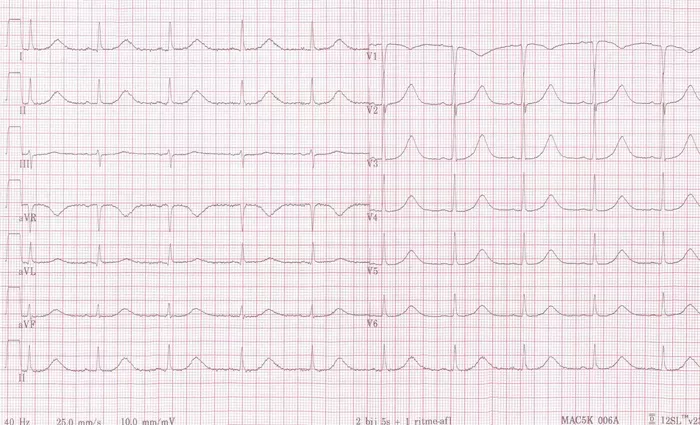Long QT syndrome (LQTS) is a cardiac disorder characterized by a delayed repolarization of the heart’s electrical system, leading to a prolonged QT interval on an electrocardiogram (ECG). This condition can be congenital or acquired, posing significant risks to cardiac health. Understanding why LQTS is dangerous requires delving into its mechanisms, clinical manifestations, associated risks, and management strategies.
The Electrical Underpinnings of Long QT Syndrome
At the core of LQTS lies a disturbance in the cardiac ion channels responsible for regulating the flow of potassium, sodium, and calcium ions during each heartbeat. Normally, these channels coordinate the depolarization and repolarization phases of the cardiac action potential, ensuring the heart beats rhythmically and efficiently. However, in LQTS, mutations in specific genes or acquired factors disrupt this delicate balance, leading to an abnormally prolonged QT interval.
The Dangers of Prolonged QT Interval
Arrhythmogenic Potential: A prolonged QT interval predisposes individuals to life-threatening arrhythmias, such as Torsades de Pointes (TdP), which can degenerate into ventricular fibrillation (VF) and sudden cardiac arrest. These arrhythmias are often triggered by factors like stress, physical exertion, medications, or electrolyte imbalances.
Risk of Sudden Cardiac Death: LQTS significantly increases the risk of sudden cardiac death (SCD), especially during episodes of arrhythmias. This risk is particularly heightened in untreated or poorly managed cases, emphasizing the importance of early detection and appropriate interventions.
Syncope and Cardiac Events: Patients with LQTS frequently experience syncope (fainting) or near-syncope episodes due to arrhythmic events. These episodes can be debilitating and may indicate an impending cardiac event if left unaddressed.
Impact on Quality of Life: The unpredictable nature of LQTS-related events can severely impact an individual’s quality of life, leading to anxiety, depression, and limitations in daily activities. The constant fear of sudden arrhythmias or cardiac arrest adds significant psychological burden.
Clinical Presentation And Diagnosis
LQTS can present with a range of symptoms, including palpitations, dizziness, syncope, seizures (in severe cases), and sudden cardiac arrest. However, the variability in symptom severity and manifestation makes diagnosis challenging.
Clinicians rely on a combination of clinical history, ECG findings (prolonged QT interval), genetic testing, and provocative testing (such as exercise stress testing or drug challenge tests) to confirm LQTS.
Genetic Basis And Subtypes
While LQTS can be inherited through autosomal dominant or recessive patterns, it can also occur sporadically due to medication-induced or acquired factors. Genetic testing plays a crucial role in identifying specific gene mutations associated with LQTS, guiding familial screening, and informing treatment decisions. Subtypes of LQTS, such as LQT1, LQT2, and LQT3, have distinct genetic profiles and clinical characteristics, influencing prognosis and management approaches.
Management Strategies
Lifestyle Modifications: Patients with LQTS are advised to avoid known triggers such as strenuous exercise, certain medications (e.g., QT-prolonging drugs like some antibiotics and antidepressants), and electrolyte imbalances (especially low potassium and magnesium levels).
Medication: Beta-blockers are the cornerstone of pharmacological therapy in LQTS, helping to reduce the risk of arrhythmias by modulating sympathetic stimulation and heart rate. In some cases, additional medications like potassium supplements or sodium channel blockers may be prescribed based on subtype-specific considerations.
Implantable Cardioverter-Defibrillator (ICD): For high-risk individuals or those with a history of cardiac events, an ICD may be recommended. This device can detect and treat life-threatening arrhythmias by delivering appropriate shocks or pacing therapies, offering a crucial safety net against SCD.
Genetic Counseling and Family Screening: Since LQTS has a genetic component, genetic counseling is essential for affected individuals and their families. Screening family members for gene mutations and monitoring QT intervals in at-risk individuals can facilitate early detection and proactive management.
The Lifelong Journey with LQTS
Living with LQTS requires a multifaceted approach encompassing medical management, lifestyle adjustments, regular follow-ups, and emotional support. Patients and caregivers must remain vigilant about symptom recognition, medication adherence, and seeking prompt medical attention for any concerning changes or events. Engaging in shared decision-making with healthcare providers and staying informed about advancements in LQTS research can empower individuals to navigate this complex condition effectively.
Conclusion
Long QT syndrome represents a complex interplay of genetic, electrical, and clinical factors that can have profound consequences on cardiac health. Its dangerous nature stems from the heightened risk of arrhythmias, sudden cardiac death, and significant impacts on quality of life. Through early diagnosis, personalized management strategies, and ongoing support, individuals with LQTS can lead fulfilling lives while mitigating the inherent risks associated with this condition.
FAQs
What does Prolonged QT mean?
Prolonged QT refers to a heart condition characterized by a delay in the heart’s electrical cycle, specifically in the QT interval on an electrocardiogram (ECG). The QT interval represents the time it takes for the heart’s ventricles to depolarize and repolarize during each heartbeat. When this interval is prolonged, it can lead to an increased risk of a type of arrhythmia called torsades de pointes (TdP), which can be life-threatening.
What is cardiac QT?
The cardiac QT interval is a measurement on an ECG that reflects the time between the start of the Q wave and the end of the T wave. It represents the duration of ventricular depolarization and repolarization. Normally, the QT interval varies depending on heart rate, with shorter intervals at faster heart rates and longer intervals at slower heart rates.
Prolonged QT intervals can increase the risk of developing TdP, a type of ventricular tachycardia that can degenerate into ventricular fibrillation, a life-threatening arrhythmia that can lead to sudden cardiac arrest. Therefore, identifying and managing conditions that contribute to prolonged QT intervals is essential in preventing serious cardiac events. This may involve discontinuing or adjusting medications, correcting electrolyte imbalances, and managing underlying heart conditions.


